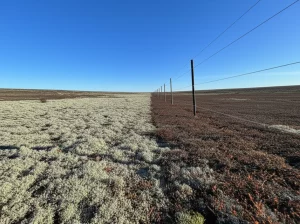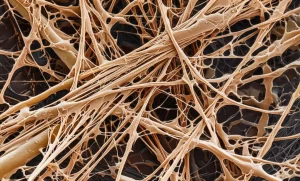The Skinny on Snow: How Early Melts are Starving Our Forests of Nitrogen
Hey there, fellow nature enthusiasts! Ever wander through a northern hardwood forest, especially as winter loosens its grip and spring peeks through? It’s a magical time, right? That melting snow isn’t just picturesque; it’s like a crucial wake-up call and a nutrient delivery service for the entire ecosystem. One of the star nutrients on that delivery truck is nitrogen (N), and boy, do those trees and tiny soil microbes love it. But here’s the kicker: things are changing, and our snowy winters aren’t quite what they used to be. We’re seeing shallower snowpacks and snowmelt happening earlier in the season. This got us wondering: what does this mean for the nitrogen cycle, especially in forests that are already feeling a bit of a nitrogen pinch?
The Shifting Winter Landscape and a Forest’s Appetite
You’ve probably heard it – winters are getting warmer. This means less snow piling up and the snow that does fall tends to melt away sooner. For places like the northern hardwood forests in the northeastern U.S., this is a pretty big deal. These forests are actually experiencing something called “oligotrophication,” which is a fancy way of saying that the availability of nitrogen, relative to what the plants need, is going down. It’s like the forest’s pantry is getting a bit bare when it comes to this essential nutrient.
Nitrogen is super important. It’s the main limiting factor for how much plants can grow and how well they can photosynthesize. The transition from winter to spring is a particularly critical window for the nitrogen cycle. Historically, this period saw a lot of nitrogen being flushed out of the system (think runoff and leaching) because the plants and microbes weren’t quite awake enough to grab it all. But if this transition is changing, what happens to the nitrogen that’s supposed to fuel the forest’s spring awakening?
We know that a good, insulating blanket of snow helps keep the soil from freezing too hard and allows microbes to keep chugging along, slowly processing nitrogen even in winter. But if that blanket is thin or disappears early, soils can freeze more deeply. Sometimes, this can lead to a burst of nitrate (a form of nitrogen plants can use) later on, but it can also mess with the delicate dance between plants and microbes, potentially leading to more nitrogen loss. It’s a complex puzzle!
Our Snowy Experiment at Hubbard Brook
To get to the bottom of this, we rolled up our sleeves and set up an experiment at the renowned Hubbard Brook Experimental Forest in New Hampshire. This place is a living laboratory, perfect for studying these kinds of questions. We wanted to see exactly how changes in snowmelt timing affect how trees and soil process and take up nitrogen.
So, what did we do? In March of 2022 and 2023, we played around with the snow in special experimental plots. In some plots, we manually halved the amount of snow (or, more precisely, the snow water equivalent – SWE). The idea was to make the snowmelt start about a week earlier than it naturally would. In other plots, we doubled the SWE, aiming to delay snowmelt by a week. We also had “reference” plots where we just let nature do its thing. This setup allowed us to compare what happens under different snowmelt scenarios.
We measured a whole bunch of things: snow depth, soil frost, how much nitrogen was in the soil (especially nitrate), how fast microbes were converting nitrogen into usable forms (a process called nitrification), and even the nitrogen content in the leaves of sugar maple trees. We also looked at fine root growth, because roots are the tree’s primary way of slurping up those vital nutrients.

One year, 2022, our early snowmelt plots did lead to deeper and more sustained soil frost during the melt period. But in 2023, Mother Nature threw us a curveball with a rapid spring warming, and we didn’t see significant soil freezing in those early melt plots. This difference between the years actually gave us a neat opportunity to see if soil frost was the main driver of any changes we observed, or if it was more about the snow itself.
What We Uncovered: Less Snow, Less Nitrogen
Alright, so what did our snowy meddling reveal? It turns out, those shallower snowpacks and earlier snowmelts really do put a damper on nitrogen availability.
Here’s the scoop:
- Soil Nitrogen Takes a Hit: In the plots where we had less snow and earlier melt, we found significantly lower levels of soil nitrate and slower net nitrification rates. This means there was less readily available nitrogen in the soil for plants and microbes.
- Trees Feeling the Pinch: The leaves of the sugar maple trees told a similar story. We saw decreased foliar nitrogen concentrations in these conditions. We also looked at something called δ15N (delta-15-N), which is a natural isotope signature. Lower δ15N values in leaves often suggest that the ecosystem is more “closed” and nitrogen-limited – and that’s exactly what we found with earlier snowmelt. It’s like the trees were signaling, “Hey, we’re not getting as much nitrogen as we’d like!”
- The Frost Surprise: Interestingly, while we initially thought soil freezing might be a huge player, our results showed that the impact of shallower snowpack and early melt on nitrogen availability happened regardless of whether there was significant soil frost or not. The snow conditions themselves seemed to be the more dominant factor in our study. This was a bit of a surprise, as other studies focusing on mid-winter snow removal have often highlighted frost impacts. Our focus was on the spring transition, which might explain the difference.
- Root Responses: We also saw that fine root biomass was lower in plots with less snow (lower snow AUC – Area Under Curve, a measure of cumulative snow depth over time) and earlier snowmelt, particularly in 2023 when soil frost was minimal. Since spring snowmelt is when fine roots often kick into gear for the growing season, it makes sense they’d be sensitive to these changes.
Essentially, our findings paint a clear picture: when the snowpack is thin and melts early, trees have less access to nitrogen and take up less of it. This isn’t great news for forests that are already dealing with declining nitrogen availability.

Why This Matters: The Bigger Picture of N Oligotrophication
So, why should we care if there’s a bit less nitrogen floating around in the forest? Well, this “N oligotrophication” – the declining availability of nitrogen relative to plant demand – can have far-reaching consequences. Nitrogen is a cornerstone of forest productivity and health. If trees are starved for nitrogen, it can affect their growth, their ability to fight off pests and diseases, and even their capacity to suck up carbon dioxide from the atmosphere, which is a pretty important job in our changing climate!
Our study provides pretty solid evidence that these shifts in winter conditions – specifically shallower snowpack and earlier snowmelt – are contributing to this N oligotrophication. It seems to be primarily through impacts on the soil’s nitrate supply and the trees’ ability to take up nitrogen.
It’s a bit like a positive feedback loop, but not in a good way. As the climate warms, we get less snow and earlier melt, which reduces nitrogen availability, potentially making trees less resilient and less able to cope with further environmental changes. This is especially concerning for iconic northern hardwood species like the sugar maple, which are already facing various stressors.
We found that soil solution nitrate and nitrification rates consistently decreased with shallower snowpack and early snowmelt. This makes sense because a lot of the nitrate that gets trapped in the snowpack during winter is released during snowmelt. Deeper snowpacks simply deliver more water and nutrients. And while sugar maples do take up ammonium (another form of nitrogen) later in the season, that early spring pulse of nitrate seems to be pretty important, and it’s being affected.
The fact that foliar δ15N values (our indicator of nitrogen uptake relative to availability) responded so clearly to snow conditions, even more consistently than total foliar nitrogen concentrations, was quite telling. It suggests that the timing and form of nitrogen available during that critical spring window are really key.
Looking Ahead: A Less Snowy Future?
The changes we’re seeing in winter aren’t likely to reverse anytime soon. Climate projections for the northeastern U.S. (and many other seasonally snow-covered regions) point towards continued reductions in snowpack depth and duration. Our results highlight that these changes in the winter-to-spring transition could keep pushing these forests towards greater nitrogen limitation.
It’s a complex world out there in the forest, with many factors like temperature, precipitation, CO2 levels, and even recovery from acid rain all playing a role in how much nitrogen trees need and get. But our study shines a light on a specific, and perhaps underappreciated, consequence of our warming winters: the snow’s shrinking role as a nutrient provider.
As we continue to watch our climate change, understanding these intricate connections is vital. For cold-adapted trees like the sugar maple, a future with less snow and earlier springs could mean an ongoing struggle for essential nutrients, potentially impacting their health and the beautiful, vibrant forests they create. It’s a reminder that even subtle shifts in one season can have big ripple effects throughout the year and for the entire ecosystem.
So, next time you see that spring snowmelt, remember it’s more than just water – it’s a life-giving pulse for the forest, and one that’s becoming a bit less reliable.
Source: Springer







